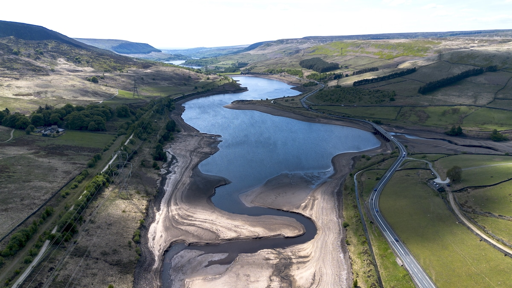- cross-posted to:
- Europe@europe.pub
- cross-posted to:
- Europe@europe.pub
Extremely low river levels in the UK recently have experts concerned about an impending drought.
The UK is also experiencing its driest spring since 1961, as BBC News reported.
According to data from the UK Centre for Ecology & Hydrology (UKCEH), the UK received just 43% of the average rainfall in March, and some rivers — including Mourne, Eden, English Tyne, Conwy and Welsh Dee — have hit their lowest levels ever recorded for the month of March this year.
River levels are expected to continue to remain low through May. Dry conditions and warm weather are also predicted for the next few months, according to UKCEH, prompting more concerns over a summer drought and how that will affect water supply.
“The dry start to May increases the likelihood that low to exceptionally low flows in some areas persist into the summer,” UKCEH reported.
In the UK, low river levels coupled with a lack of reservoir infrastructure puts water supply at risk. As The Guardian reported, there have been no new water reservoirs built in England for at least 30 years, so farmers and companies turn to rivers to draw water when reservoirs run low. When both run low, the demand will outpace supply.
In response, officials are considering water use restrictions, as The Guardian reported.
“This crisis was avoidable. But thanks to corporate greed and regulatory complacency, our reservoirs are running dry and our rivers are polluted with sewage,” James Wallace, CEO of the charity River Action UK, told The Guardian. “Rather than punish the culprits, customers have been told by government they will be fined £1,000 if they break a hosepipe ban. Yet again, the public will bear the costs of a failing water industry.”
A drought map by the European Commission’s Joint Research Centre reveals that much of the UK and Ireland is already under a drought watch or warning. While officials have not formally announced a drought or water rationing, some farmers are already feeling the impacts.
“We are having a drought now from an agricultural point of view,” Nick Deane, a farmer based in Norfolk, told BBC News. “We have to ration our water and decide which areas we are going to put that water on in order to keep the crops growing.”
According to the European Commission, the drought risk applies to much of Europe following months of lower-than-average rainfall and higher-than-average temperatures, with northern and western Europe likely to experience continued dry conditions in June. The commission noted that the lower-than-usual river levels across Europe are already having a negative impact on agriculture, energy generation and transport.
Vegetation in some areas is already showing signs of stress, too, meaning the lack of rainfall is harming ecosystems. In the UK, wildfire events in the first four months of 2025 have already surpassed the amount of land burned more than any other year in over 10 years due to extended dry conditions.
archived (Wayback Machine)


